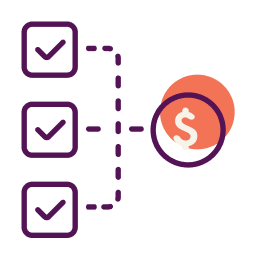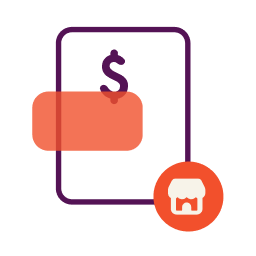Factoring has been around for centuries and is one of the oldest ways to finance projects in the world. Although medieval businessmen were using factoring, today online factors have made it more accessible to small businesses looking for a quick and easy way to leverage their accounts receivables into capital to meet their business needs. Because of the way factoring works, there are some things you need to know about Factoring post COVID-19 that might help you access capital when other ways of financing have dried up.
What is Modern Factoring?
Factoring isn’t really a loan, but is better described as selling your accounts receivable at a discount.
A third party, called a factor, will purchase your receivables at a discount and pay you an agreed-upon percentage of your outstanding invoices now, and pay the balance (minus the percentage and any fees you negotiate) once he or she collects from your customers. The difference between the invoice amount and the discounted rate negotiated with you is how the factoring company makes its income.
Accessibility is the biggest difference between a modern factor and how a factor worked hundreds of years ago. You can create a relationship with a factor and handle all the day to day particulars of the arrangement online, making it much more convenient than it was just a few years ago.
How Does Factoring Work?
What you need to know about factoring is that most factors target specific industries. For example, factoring is a very popular way the textile industry finances the manufacturing of clothing, etc. Because they tend to work in specific industries, they understand the players, the standard credit practices in those industries, and are able to negotiate the appropriate rates they need to offer their services. If you are shopping for a factor to work with, look for someone familiar with your industry. It will make it easier for your business in the long run.
After you’ve initiated a relationship with a potential factor, they will likely want to review your client’s payment history with you to gain a better understanding of their overall creditworthiness. The creditworthiness of your customers is actually more important than your business’ credit history, because the factor will collect from them, not you, in most cases. If they like what they see, they will then negotiate with you to purchase your outstanding invoices.
There is no standard factoring arrangement, but you should expect they will offer you something between 85% to 90% of the value of your accounts receivable. How much they are willing to pay will largely depend on the creditworthiness of your customers.
In addition to the discount they offer, there will likely be a fee of somewhere between 2% and 4.5% of the total invoice amount for every day after 30 days the invoices aren’t paid by your customers.
The factor will usually pay an agreed upon percentage of the invoice amounts within one to three or four days. Once they collect the invoices, they will pay the balance as agreed upon. The better your customers’ credit history, the better the factoring arrangement you should be able to negotiate.
One thing you need to know about factoring is that the fees you will ultimately agree upon will be based on the creditworthiness of your customers and the size of the invoices. You should expect that the bigger the invoices, the more willing the factoring company will be to negotiate in your favor.
NOTE: Because the invoices you sell to the factor will then be collected by them, the factor has a legal right to communicate directly with your customers to ask for payment. If this is something you don’t want to have happen, factoring will not be a good option for you.
What’s the Difference Between Recourse and Non-Recourse Factoring?
Most factoring done in the United States would be considered Recourse Factoring, so the difference matters and you should be aware of what that means before you enter into a factoring agreement.
- In Recourse Factoring, the factor buys your accounts receivable with the understanding that you will pay the factor for any invoices they are unable to collect.
- In Non-Recourse Factoring, the factor assumes all the liability associated with uncollectible invoices. In other words, if an invoice goes unpaid, you will not be liable to pay the factoring company. Because of the additional risk to the factor, fees are usually higher and they will typically pay less for your invoices with Non-Recourse Factoring.
Factoring is not an all-or-nothing proposition. You can sell some of your receivables and not others. You might also expect that there will be some invoices the factor may reject. This is all part of the negotiations.
Does Invoice Factoring Make Sense for My Business?
Depending upon the nature of your business it could, but it isn’t a good fit for every business. For example, if you are a laundry that caters to a walk-in clientele, you might not be a good fit for a factor. On the other hand, if you do the laundry for a dozen or so big hotel chains in your area, and bill them with an invoice, you could be a fit.
Factoring is often used in manufacturing because of the long lead times associated with producing goods that are then distributed through multiple channels before reaching consumers. Think in terms of a children’s clothing manufacturer who sells to WalMart or Target. Factoring is how many clothing manufacturers fund these large orders.
Should I Consider This for My Business?
In our current post COVID-19 world, factoring is one of the few options available to access capital and can be a good option for small businesses looking for quick access to cash without going into debt, giving up equity, or collateralizing capital assets. If you are considering factoring, you’ll want to make sure your margins leave enough room to accept the discount from the factor and still make a profit.
Factoring also allows you to access immediate working capital enabling your company to produce more goods without interruption while still offering your clients payment terms.
Although factoring isn’t a small business loan, it can allow you to access capital quickly, which is its primary benefit.
What is the Downside to Invoice Factoring?
Factoring can be expensive when compared to a traditional business line of credit or a term loan. You’ll want to make sure you understand what it will cost and compensate for that in how you price your goods or services to your customers. If you typically work on very thin margins, factoring can be too expensive to maintain profitability.
Although many industries are familiar with how factoring works and customers are used to paying their invoices to a factoring company, some business owners have traditionally shied away from factoring because they don’t want the factor to collect directly from their clients. If this is a dealbreaker for you, factoring might not be an option.
Make sure you understand all the costs associated with factoring before you sign on the dotted line. Because there is not a standardized factoring arrangement, make sure you understand these things you need to know about factoring to ensure it doesn’t negatively impact your bottom line.
This article was originally written on May 27, 2020 and updated on October 20, 2020.



Have at it! We'd love to hear from you and encourage a lively discussion among our users. Please help us keep our site clean and protect yourself. Refrain from posting overtly promotional content, and avoid disclosing personal information such as bank account or phone numbers.
Reviews Disclosure: The responses below are not provided or commissioned by the credit card, financing and service companies that appear on this site. Responses have not been reviewed, approved or otherwise endorsed by the credit card, financing and service companies and it is not their responsibility to ensure all posts and/or questions are answered.